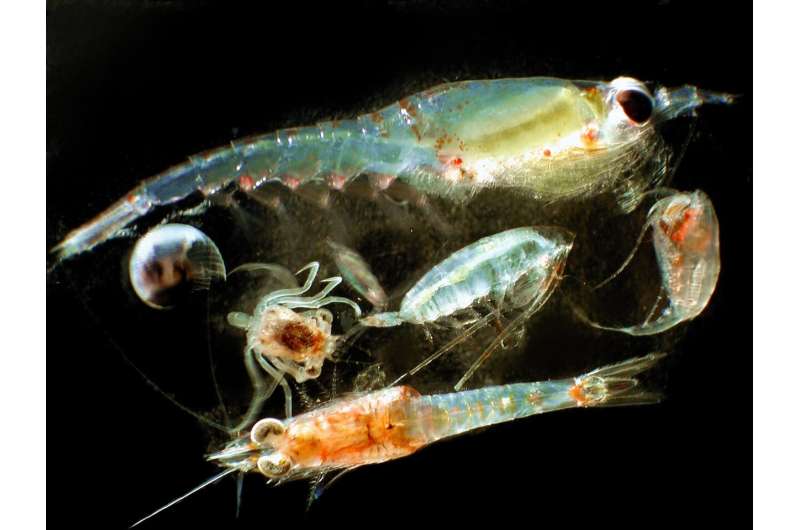This article has been reviewed according to Science X's editorial process and policies. Editors have highlighted the following attributes while ensuring the content's credibility:
fact-checked
peer-reviewed publication
trusted source
proofread
Warming waters of the Arctic could pose a threat to Pacific right whales

As rising global temperatures push Arctic icecaps into retreat, large and small sea creatures and the commercial fishing boats that follow them are also migrating northward.
This mass migration toward the relatively narrow Bering Strait could lead to more ship collisions and gear entanglements for the extremely rare and critically endangered eastern population of North Pacific right whales, according to a researcher who recently completed her Ph.D. at Duke University's Marine Lab.
"There's a really wide, shallow shelf (sea floor) that extends about 500 kilometers in the whale's primary feeding ground north of the eastern Aleutian Islands off Alaska," said Dana Wright, who is the lead author on a study that appeared Oct. 4 online in Ecological Applications.
"Cold meltwater from the sea ice in spring combines with currents that move up on the shelf to aggregate the zooplankton the whales eat in this area," Wright said. For a filter-feeding whale, concentrated prey means more food with less effort, but all the other predators have the same idea.
"Ecosystem dynamics are changing," said Wright. Commercially valuable fish and some of the industrial-scale fishing fleets that follow them are moving north too. "Prey are responding to the changing climate, and species at the top of the food chain are too," Wright said.

Sightings of North Pacific right whales are exceedingly rare, but the animals are likely to have been moving north along with the zooplankton, according to Wright's modeling analysis of zooplankton and temperature data collected NOAA Fisheries' Alaska Fisheries Science Center.
There are two populations of right whales in the Pacific, and the eastern group found in the waters off Alaska and the Canadian Pacific is thought to number just 30 animals, Wright said.
At least 20,000 right whales were slaughtered in the North Pacific between 1835 and 1850. "They were the 'right' whale because, for their size, they had the most oil and baleen," Wright said. "And they floated because they had so much fat, so they didn't have to be processed immediately."
A critical habitat area the shape of home plate in baseball was assigned in the southeastern Bering Sea in 2007, based on about a decade of Pacific right whale sighting data. "So I was curious," Wright said. "Is this going to hold up under climate change, especially since the North Atlantic right whales seem to be shifting their distribution?"

Because the whale's rarity makes them hard to study, Wright led a study using the whale's food to determine if the protected area is enough and whether it's in the right place.
There is currently a petition from the Center for Biological Diversity pending before NOAA to expand the protected area. "But it's just a paper map," Wright said. "There are no restrictions or enforcement to date, but knowing more about potential drivers of shifting distribution for these animals is an important step toward having grounds for strategic, refined protections and management."
More information: Dana L. Wright et al, Joint species distribution modeling reveals a changing prey landscape for North Pacific right whales on the Bering shelf, Ecological Applications (2023). DOI: 10.1002/eap.2925
Journal information: Ecological Applications
Provided by Duke University


















